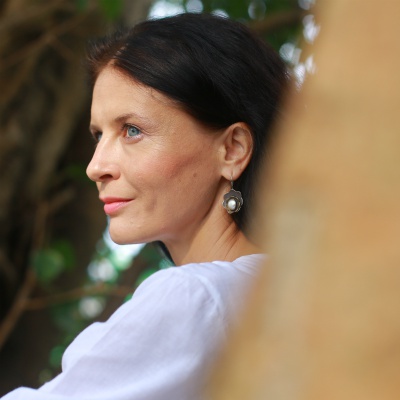We use cookies to optimise our website functionality and give you the best experience possible. Please, accept our Terms and Conditions. ACCEPT
AYURVEDA & YOGA EXPERTS
Meet World's most respected Ayurveda and Yoga experts.
INTERVIEWS
Questions and answers for our experts about ayurveda healing, yoga & travel.
TRAVEL THEMES
Explore the stories of ayurveda, Yoga & traveling by different interests.
PLACES
Discover the places, where ayurveda & yoga has its roots.
CALENDAR
Experience every day of the year in different rhythm & pace.
VIDEO & PHOTO
That's the way we see it!
AYURVEDA & YOGA QUESTIONS
Every day we ask our experts one question about Ayurveda & Yoga.
AYURVEDA & YOGA THEORY
Learn more about the ayurveda & yoga history, theory & healing.
AYURVEDA & YOGA PRODUCTS
Every plant is a medicine, the question is when to use it.
ESSENCE OF AYURVEDA
Dr.George Eassey story to Ayurveda.
What is Ayurveda? How is this ancient medical system connected with yoga, meditation, healthy food, relaxation in nature and modern life style?
Ayurveda trails are dedicated to everyone, who is searching answers to these questions. It does not want to be anything else, but art expression of healthy life style inspired by Indian ancient healing traditions, creating harmony with the dynamics of contemporary life.
NEW YEAR AT FORT COCHIN I.
Supported by the Kochi Biennale Foundation (KBF), last year’s Pappanji was being made under the supervision of artists K. Reghunadhan and K.G. Anto, who were guiding about 20 workers and art students working day in and out to ready the massive figure.
Burning of Pappanji is a public celebration on the midnight of December 31 to usher in New Year’s festivities and carnival at Fort Kochi. “We’re being treated with much love and affection by the people living nearby; they even bring delicious home-made food for us while we are at work,” says Mr. Reghunadhan, who was a participating artist in the first edition of the Kochi Muziris Biennale.
Pappanji, Portuguese for ‘old man', is the effigy of a suited and booted, old man symbolising the passing of the old year, and is rooted in the Portuguese, Dutch and other European influences on Fort Kochi, says the KBF in a press release.
While the tradition started among the local people of Fort Kochi in the 1980s, the Biennale Foundation has undertaken the building of the Pappanji since the first edition of the art exhibition in 2012.
The construction of last year’s Pappanji, which started just five days back, was hold some surprises, says Mr. Reghunadhan. “It was challenging to make a huge Pappanji in less than 10 days,” says the artist. “And unlike the models from the earlier years, we are making a totally different Pappanji, one with an international appeal.”
The Pappanji stands on a strong base, five feet from the ground, with a steel frame stuffed with eco-friendly material, such as jute and cotton to enable the burning process.

Founder & Director of Ayurveda Trails, healing collection of (extra)ordinary people and their stories, whose experiences are transferred into various trails shared by travelers.

Seeks to invoke the cosmopolitan spirit of the modern metropolis of Kochi and its mythical past, Muziris, create a platform that introduce contemporary international visual art theory and practice to India.
10 REASONS WHY AYURVEDA TRAILS ARE DIFFERENT
Ayurveda trails is using the symbol of mudra as reminder, healing is in your hands. We are creating a small collection of highly specialised ayurveda resorts run by passionate ayurveda experts, who want to keep authentic healing knowledge for modern world.
ONAM
The Harvest Festival in Kerala
Onam is the most popular festival in Kerala. It can be traced to the primitive harvest festival and also to the myth regarding King Mahabali - the benevolent asura ruler who brought peace and prosperity to his country. It is celebrated in August and September.
What is ayurveda? How is this ancient medical system connected with yoga, meditation, healthy food, relaxation in nature and modern life style? Ayurveda Trails is dedicated to everyone, who would like to travel and search answers to these questions.
NAVARATRI
Festival of Nine Goddesses
Navaratri is a nine night festival that honors the Mother Goddess in all her manifestations. The worship, accompanied by fasting, takes place in the mornings. Evenings are for feasting and dancing. Each day has a different ritual associated with it.
The importance of the feast to the Kerala's Onam celebration culture is captured in the famous Malayalam proverb: Kaanam Vittum Onam Unnanam - which means: One must have the Onam lunch even by selling one's property, if need be.
MANALTHEERAM AYURVEDA BEACH VILLAGE
Manaltheeram Ayurveda Beach Village, gives you an opportunity to pamper yourself with a heavenly experience. Enter the world of holistic healing and let Ayurveda and meditation restore your physical, mental, spiritual and emotional equilibrium.
MANALTHEERAM
Dr. Hemalatha Manoj
In Manaltheeram, we believe, that Ayurveda is a divine science of life, our hands should be pure to treat a patient. Sometimes we are not able to cure every one but it is important not to make any mistakes from our hands. We pray to God.
Somatheeram, the world’s first Ayurveda hospital set in a resort ambiance to provide Ayurveda healing and treatments programmes. With its exotic tropical beauty and tranquil hospitality, this getaway is the perfect place for relaxation and rejuvenation.
The World’s First Ayurveda Tourist Resort: Baby Mathew, in 1985 together with his brother Dr.Pauly Mathew, has founded the world’s first ayurveda tourist resort Somatheeram in Kerala. How has this journey started?
Cliff View Ayurveda Retreat is built in the Bauhaus style, which aims to reunite fine art and functional design, creating practical objects with the soul of artworks. The resort embrace the philosophy of traditional Ayurveda in modern style.
HARIVIHAR HERITAGE
Dr. Sri Kumar
Harivihar, abode of the divine, is a 170 year old painstakingly restored royal heritage homestead located in Calicut. It offers unparalleled experience of staying in a heritage ambience and benefit from the goodness of Ayurveda and Yoga, two great contributions of India to mankind.
I hesitated for publishing this story quite late, but there’s a beauty in rewinding. Makes me appreciate how all those days have become of me. The clever fall of dominoes of life events that led me to still standing. A very happy new year to all!
SwaSwara means your inner voice, this is a place of natural harmony to release, refocus and recalibrate the self. Inspired by the first sound of creation, the resort in Gokarana on Aum Beach is a perfect setting to enable one to hear the voice of the inner self.
Green gram is a powerhouse of nutrition. It has high nutritive value and can be consumed by anyone for improving health. Hence, this superfood is one of the most vital detoxifying agent as well as an energiser that helps to enhance the immunity of the body.
KAIRALI - THE AYURVEDIC HEALING VILLAGE
There is no better place to get inside nature and rejuvenate with natural medicine than the sweet scented forests of Kerala's Pala trees. Time spent at this jungle paradise will allow you to experience the authentic healing practices of India.
A collaboration of Vimal Chandran with Ajay Menon and a tribute to Avial. These series of films, photographs and illustrations we made inspired from Kerala, they celebrate Kerala’s unique landscapes, art and culture.
ayurveda trails pvt | © 2018
